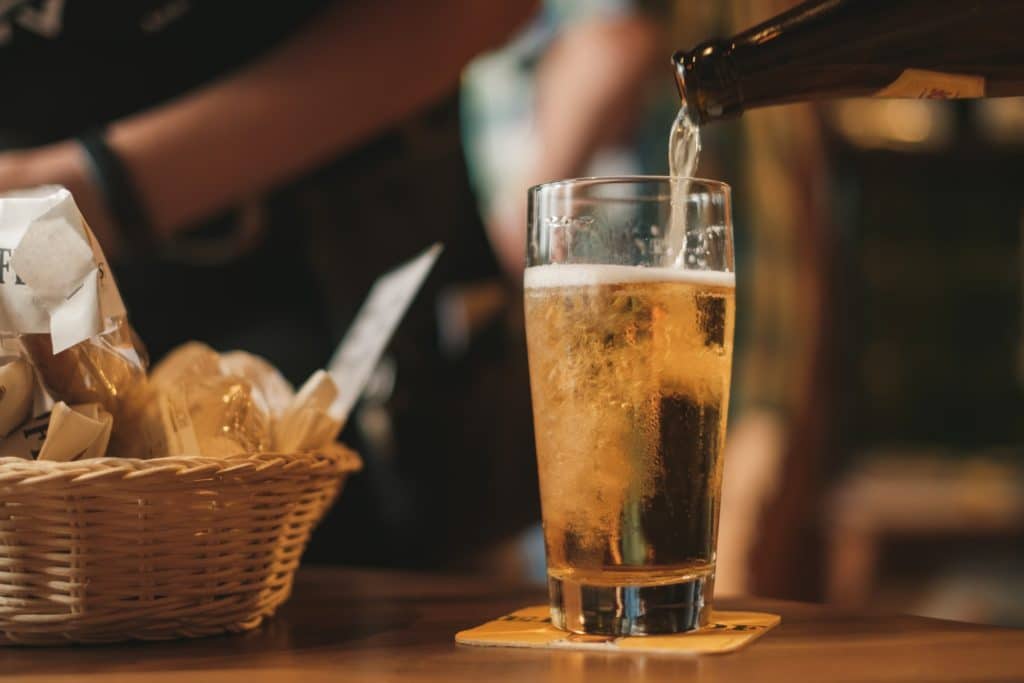
“We all have at least one coworker or friend who likes to slap their belly and joke about their developing “dad bod” but there is a darkness beneath the jokes and memes we love to share.”
It may be time to call your favourite uncle because we’re talking beer bellies.
In all seriousness, this article is about beer bellies and we’re going to take a deep dive into the cause, cure, preventative measures, and health concerns. But before all that, the question remains: are they even a real thing?
The phrase “beer belly” is actually a misnomer. The reason beer gets a bad reputation is due to its serving size and high caloric content when compared to other alcoholic drinks. One beer typically has 150 calories in it, while a shot of vodka has 97 calories and a glass of wine has approximately 83.
So a “beer” belly doesn’t exist, however, bellies are definitely real and unfortunately threaten your life.
The cause
While beer can help contribute to a fat belly, it is not solely responsible, and repeating something like, “beer makes you fat” is considered misinformation. You may even know someone who drinks a lot of beer and does not have the telltale “beer belly”. This is because everyone is different and our bodies store fat in different locations.
Women are most likely to store fat in their hips, thighs, arms, and butt. Men are most likely to store fat in their bellies. Both genders will be more prone to gaining fat as they age and hormone levels decrease.
As mentioned above, beer is not the only culprit of a fat belly. Lifestyle is to blame. A man with a belly will often not be very active and have poor dietary habits such as consuming unnecessarily large portions or drinking in the evenings.
Beer can, however, be the tipping point. Many individuals drink beer daily, and even if it’s just “one after dinner” that adds up to 750 extra calories after a five-day workweek. If that same individual consumes, say, six beers during the weekend, that would add up to 1650 per week or 6,600 per month. Since we know that 3,500 calories equal one pound of body weight, that’s almost two pounds per month. And that adds up quickly.
A sedentary lifestyle can very much contribute to a beer belly as well. There are plenty of individuals who are active and also drink beer weekly, and they often do not have bellies. How much harm can a few beers really do if you are also cycling, hiking, running, or just exercising in some way, three days a week?
Of course, quitting alcohol altogether will result in many benefits, but the danger of excess body fat is the real danger here.

Health concerns of the beer belly
We all have at least one coworker or friend who likes to slap their belly and joke about their developing “dad bod” but there is a darkness beneath the jokes and memes we love to share.
Individuals with beer bellies are putting themselves at great risk. High levels of abdominal fat have been linked to an increased risk for type two diabetes, cardiovascular disease, high cholesterol, high blood pressure, erectile dysfunction, fatty liver disease, metabolic syndrome, and higher mortality.
Furthermore, there are two types of fat associated with a belly. Subcutaneous fat is the fat just underneath our skin. We all have it, some of us more than others. Subcutaneous fat is often harmless and can be found all over the body.
The dangerous fat that is associated with all of the diseases and health problems listed above, is visceral fat. Visceral fat, while not visible from the outside, is fat deep within you surrounding your organs. If left unchecked, your body will begin to store the visceral fat inside your organs when there is no more room outside, leading to diseases such as fatty liver disease. If you have a belly that feels hard instead of soft and squishy, it is a result of visceral fat pushing the abdominal wall outward. Your abdominal wall (or your abs) is made up of tough contractile tissue and tough fibrous tissue, resulting in that “hard” feeling.
The cure
You probably already have a good guess at the cure for a beer belly.
Losing weight can be and is difficult for most people, but the result is life-giving. If not for yourself, then why not do it for your loved ones?
What if I told you that you don’t need to stop drinking beer? You don’t even have to exercise (but you should!). Losing weight can begin with some simple yet effective lifestyle changes. If you don’t want to give up alcohol, drinking less is fine, or lower calorie beer is an option too. Remember, the spare tire on your abdomen came from consuming too many calories over a long period. You may not have even noticed! Losing weight can be achieved by doing this in reverse.
Exercises that “target” belly fat such as sit-ups or crunches is not going to help any more than the extra calories burned. There is no scientific literature supporting the idea that one can “target” areas for fat loss. That being said, exercising will help burn the belly fat off thanks to the calorie expenditure and the positive effect that exercising has on your metabolism.
The good news is that visceral fat is broken up easier than other fats and if the steps are taken to lose weight, you will likely see progress in the midsection first.
Preventative measures
The best method to prevent the accumulation of a beer belly will also prevent a plethora of health risks, and that’s nutrition and exercise. If you want tips on healthy lifestyle habits and free exercise programs, check out more articles at The Smart Gainer.
Beer is not the enemy and shouldn’t be blamed so often for the spare tire pandemic. We’ve all heard the phrase “everything is O.K. in moderation” and that applies here. In addition to moderating your beer intake, switching to a lighter beer can be helpful as they often have fewer calories than dark beers.

Something else to consider is the carrot-on-a-stick method. When you are craving a cold one, discipline yourself and earn it by going for a walk first. If you have a treadmill or elliptical at home, set a five-minute timer. That’s really all it takes to, at the very least, effectively slow down the process of weight gain.
Don’t “go with the flow”. According to American Medical Association figures, approximately half of U.S. males are overweight, with one in four trying to lose weight at any given time. The key is consistency. Do a little bit every day and it will add up to a healthy lifestyle and help you break away from the obesity plaguing North America.
Thank you for making it to the end of the article, I appreciate you taking the time to read this. If you want to support me or support the website, consider sharing this post or telling your friends about us.